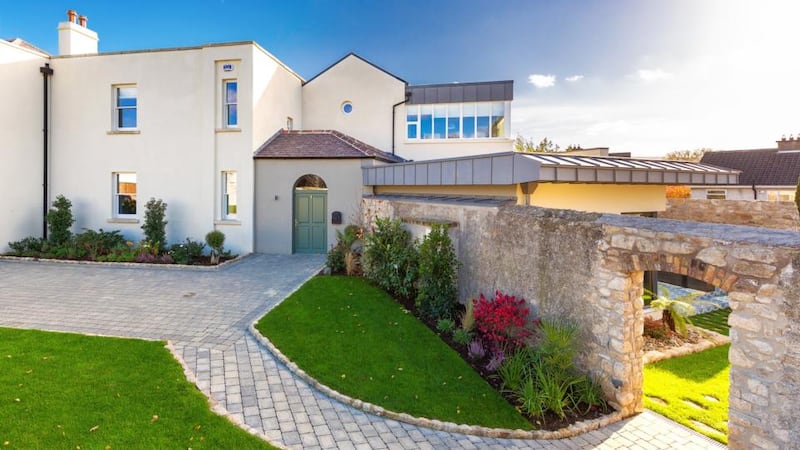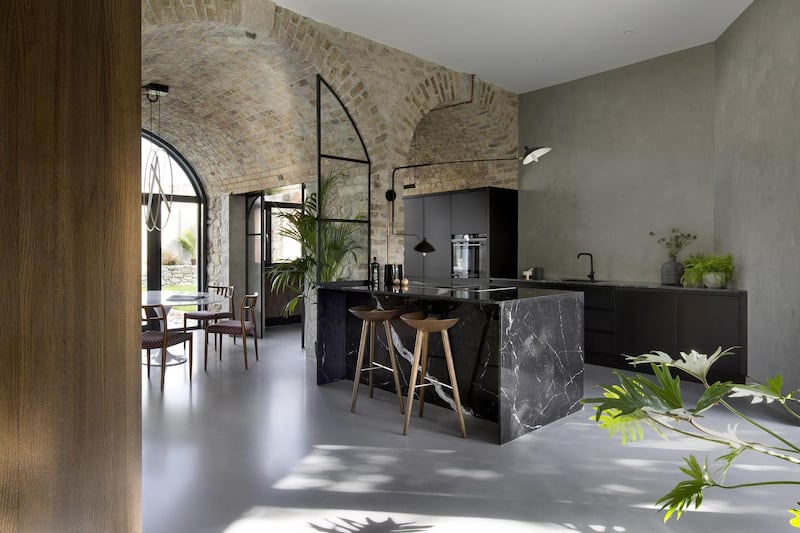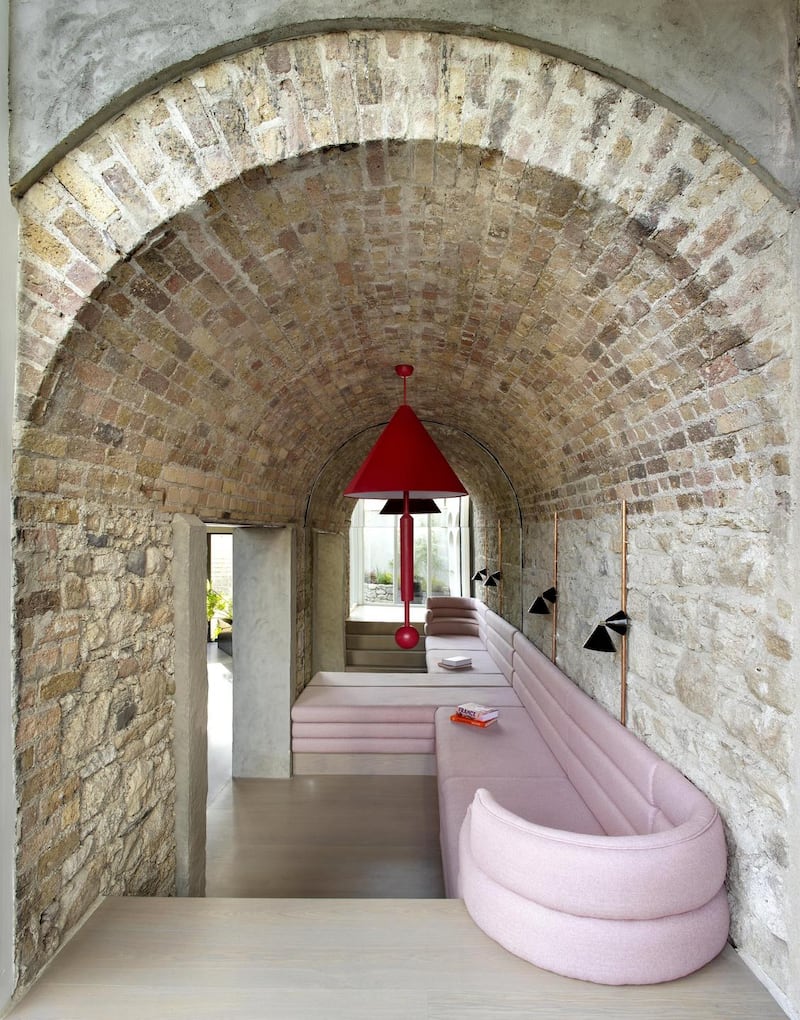The development at Bolton Park in Rathfarnham – a mix of townhouses and the sale of Bolton Hall – is complete, with the final two properties now on the market. And if there was ever an example of saving the best until last, The Coach House and Mill Cottage fit the bill perfectly.
The latest offerings from Neill and Aoife Collins of Homeland on the 4.75-acre site, which they purchased in 2015 for €4.75 million, are two period conversions. The first and most interesting is The Coach House; a four-bed 286sq m (3,078sq ft) property with two courtyards linked by a wraparound garden – where the old coach entrance arches remain.
Dating from Georgian times, the coach house itself was previously attached to a paper mill, and its period features add so much interest internally that it is difficult not to lay on the superlatives too thick. From barrelled ceilings in the kitchen, diningroom and utility area, to the portholes upstairs, and the incredible original walls which have withstood the elements for more than two centuries, they all combine to create a backdrop which contrasts completely with the avant-garde interiors by Roisin Lafferty.
"I knew we needed to step outside our comfort zone with this," says Neill Collins. "The brief was to be brave and really bold with sharp contrasts; I wanted the house to breathe quality and have a sense of industrial luxury – because of the contrasting materials [old granite walls sit against steel architraves, oak parquet sits with poured concrete flooring, and weathered brick arches support ultra-modern light fittings].
The project was overseen by Ferreira Architects, and Collins admits that this part stable-part mill conversion within a listed building was "one of a kind". The planning process was "quite a painful one – as we had to preserve the integrity of the original structures with minimal interference, while trying to be bold at the same time. I knew if we played it safe it would never have worked."
The property has two reception rooms – one, a dark, intimate dual-aspect room in moody blues, and the other, a light-filled garden room. Central to the house are the kitchen, dining and utility areas, each of which sit into the barrelled arched spaces, as does a long reading room with a clever mirrored wall acting as a trompe l'oeil.
Of interest is a cantilevered custom-tiled table which extends outdoors, and the installation of bifold windows means it can accommodate 16 for dinner when the windows are open. The extension of a modern garden room sought not to compete with the original structure – which Collins describes as “like walking into a time capsule”.
The use of colourful encaustic-style tiles both indoors and outside adds further interest to this project – essentially a tale of contrasts, and one which Collins describes as the most interesting of his career.





Mill around
Next door, and on a smaller scale but interesting in its own right too, is Mill Cottage, a two-bed unit extending to 85sq m (915sq ft). Again, a restoration project in part of the old mill, the view from the main bedroom is that of the mill race over which the property stands, with the sound of the rushing waters beneath.
Just off the parking area to the front of the property is a tiny garden folly. A protected structure, it currently houses cans of paint, but with its vaulted ceiling and gothic windows overlooking the stream it would make a super – albeit tiny – reading room.
Collins's work continues with new projects at Camberley Mews in Churchtown, a development of six family homes and three duplex apartments, and 16 houses at Stanford Park on Westminster Road in Foxrock.
In addition, there are 25 houses coming to the market at The Rectory in Baldoyle, and outside Dublin, work has started on a 200-house project at Mungret Gate in Limerick, with a further 50 houses on the horizon for Cork.
Collins began his career working for his uncle’s construction company in Co Limerick at the age of 13.
The interiors of The Coach House will probably divide opinion: some will fall head over heels for it, while others may decide it is far too daring. In either case it has achieved precisely what the design brief outlined: a bold and brave project that focused on repairing rather than restoring the integrity of the original Georgian architecture.
Knight Frank is handling the sale of both properties, which are seeking €1.6 million and €475,000 respectively.













